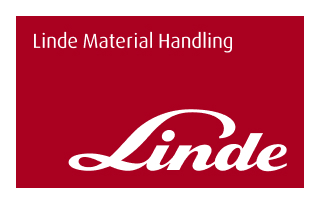Unloading trucks using a forklift in Australia is a routine yet safety-critical operation across many warehouses and logistics hubs. Employing proper unloading techniques, such as correct alignment, load handling, and situational awareness, not only reduces risk of injuries and product damage, but also helps avoid costly downtime. This guide aims to empower forklift operators and warehouse teams to unload trucks both efficiently and safely.
Why Proper Unloading Matters
Unloading may seem straightforward, but it’s fraught with potential hazards. Safe, well-executed methods do the following:
-
Protect workers from injuries.
-
Minimise damage to products and equipment.
-
Prevent delays in operations.
The goal of this guide is to help forklift operators and warehouse staff unload trucks effectively, confidently, and safely.
Pre-Unloading Preparation
Inspect the Forklift Before Use
-
Check battery or fuel levels.
-
Review tyre condition for wear or damage.
-
Test hydraulic systems for smooth and responsive function.
-
Confirm safety features (brakes, horn, lights) are all operational.
Check the Delivery Truck Setup
-
Ensure the truck is parked on firm, level ground.
-
Check the wheels for stability.
-
Open the container or truck doors carefully, clearing any potential hazards.
Confirm the Load Information
-
Know the weight of the goods to be lifted.
-
Identify pallet or packaging type.
-
Understand loading pattern and access points to plan sequence.
Step-by-Step Guide to Unloading a Truck with a Forklift
-
Approach the truck slowly and align the forklift squarely with the pallet.
-
Check overhead and side clearance to avoid collisions.
-
Insert forks fully under the pallet.
-
Tilt the mast back slightly to improve load balance.
-
Lift and back away slowly and steadily.
-
Drive to the designated drop-off zone.
-
Lower the load before setting it down to reduce impact.
-
Repeat until the truck is fully unloaded.
Remember that forklifts in Australia must adhere to specific safety guidelines, such as those outlined by Safe Work Australia and state regulators like WorkSafe VIC and QLD.
Safety Tips During the Unloading Process
Maintain Clear Communication
-
Utilise hand signals or radios for coordination.
-
Employ a dedicated spotter if visibility is restricted.
Keep a Safe Operating Speed
-
Avoid abrupt stops or turns.
-
Adjust speed according to whether you're unloading inside or outdoors.
Watch for Pedestrians or Obstructions
-
Ensure high-visibility attire is used throughout.
-
Sound the horn before entering blind corners or confined zones.
Post-Unloading Best Practices
Inspect the Forklift Again
-
Look for any signs of wear, damage, or hydraulic issues post-operation.
Return the Forklift to Its Charging or Parking Station
-
Securely log usage details.
-
Report or flag any maintenance issues immediately.
Common Mistakes to Avoid When Unloading Trucks
-
Neglecting pre-operation inspection.
-
Lifting loads exceeding capacity.
-
Failing to check load stability before lifting.
-
Driving with raised forks.
-
Ignoring floor conditions or gradients, especially slippery surfaces or ramps.
Forklift Operation Standards in Australia
In Australia, operating a forklift requires a high-risk work licence specific to forklifts, issued under the National Licensing Standard (LF or LO categories). Employers, who are referred to as persons conducting a business or undertaking (PCBUs) must ensure:
-
Operators hold the appropriate licence.
-
Adequate, site-specific training and refresher programs are in place.
-
Verified familiarity with equipment and attachments.
-
Strict adherence to workplace protocols and traffic-management plans.
By following these standards, both you and your team can ensure operations remain safe, and that your forklifts are used in compliance with national and state safety regulations.
Stay Safe and Efficient When Using Forklifts
Safety during unloading hinges on three pillars: preparation, technique, and vigilance. By staying sharp, following best practices, and continually reviewing processes, teams can minimise risk and maximise productivity.
Another element you can add to your forklift operations is utilising tried and trusted safety solutions that help ensure the safety of your people. At Linde MH, we have one clear goal, avoid 100% of accidents in intralogistics. We provide integrated solutions which help companies master the diverse challenges of modern, safe intralogistics, and you can explore our safety solutions by clicking the button below.
EXPLORE OUR SOLUTIONS

